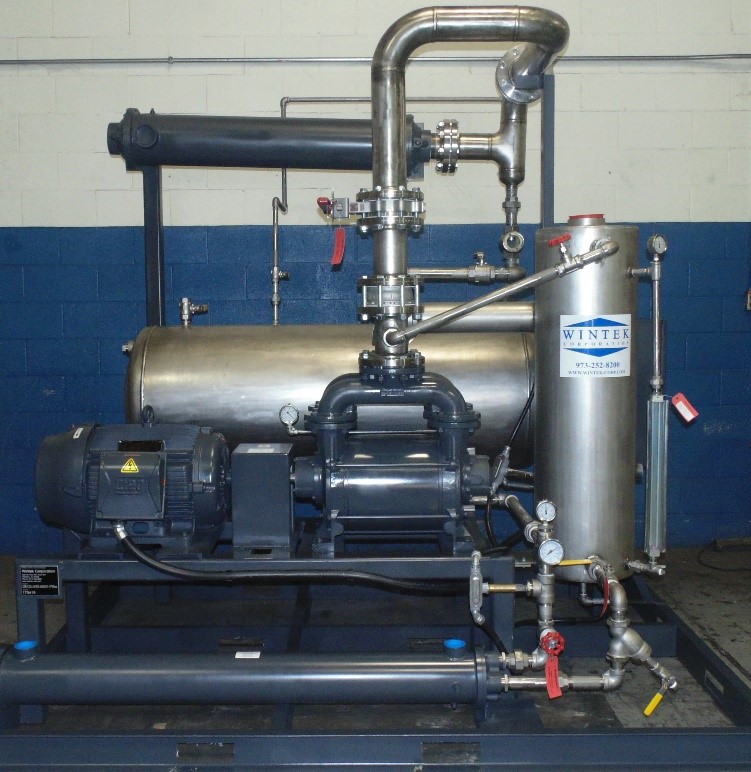Vacuum Filtration
Vacuum filtration, or suction filtration, is the process of separating a solid from a liquid through a filter element. The vacuum creates a driving force that pulls the liquid through the filter while the solids cake on the outside of the filter. Moreover, vacuum helps to achieve a higher level of dryness which improves yield and recovers a purer liquid. Laboratory and full-scale production environments use this type of filtration.
Industrial Filtration Techniques
In larger scale vacuum filtration applications, rotary vacuum drum filtration is common because dry product is continuously produced. In this process, a vacuum system pulls suction on the inside of a rotating drum covered in a filter element. The liquid is pulled through this filter by the vacuum, while the dry product is scraped from the filter aid via a knife. A liquid spray cleans the solid cake on the outside of the drum near the end of its rotation. The vacuum system must handle this spray, as well.
Protection from Process Carryover
Typically, some process solids pass through the filter element. For large-scale industrial applications, Wintek recommends a liquid ring vacuum system. These pumps handle small amounts of both liquid and solid carryover without hindering performance. However, if a significant amount of process carryover passes through the filter, Wintek recommends implementing a knockout pot. These vessels give the vacuum pump an extra layer of protection from process carryover.
Wintek designs full-recovery liquid ring packages because this system configuration allows the customer to collect the solvent, usually water, for reuse. From a vacuum system design perspective, vacuum filtration can be similar to vacuum drying.

Wintek condenser/receiver, large capacity liquid ring vacuum system, for use in vacuum filtration.

